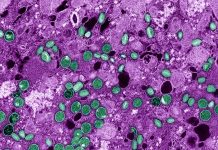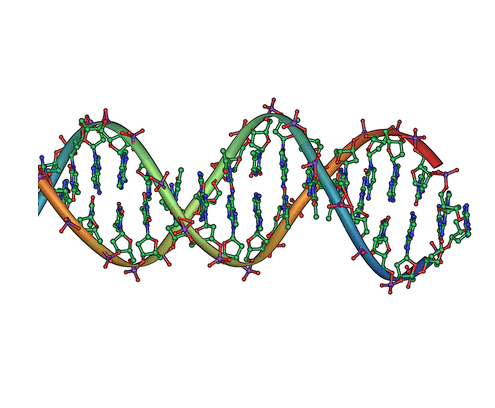Information about “family and kinship” systems (which is routinely studied by social anthropology and ethnography) of prehistoric societies is unavailable due to obvious reasons. Tools of ancient DNA research along with archaeological contexts have successfully reconstructed family trees (pedigrees) of individuals who lived about 6000 years ago at British and French sites. Analysis reveals patrilineal descent, patrilocal residence and female exogamy were common practice at both the European sites. At the Gurgy site in France, monogamy was the norm while there is evidence of polygamous unions at the British site of North Long Cairn. Tools of ancient DNA research has come handy to the discipline of anthropology and ethnography in studying kinship systems of prehistoric communities which would not have been possible otherwise.
Anthropologists or ethnographers routinely study “family and kinship systems” of societies but conducting such studies of prehistoric ancient societies is a different ballgame altogether because all that is available to study are contexts and some archaeological remains including artifacts and bones. Fortunately, things have changed for good courtesy advances in archaeogenetics or ancient DNA (aDNA) research. Now it is technically possible to collect, extract, amplify and analyse sequences of DNA extracted from ancient human remains who lived thousands of years ago. Biological Kinship between individuals which is key to understanding caregiving, resource sharing and cultural behaviours among members of family is inferred using kinship identifcation softwares. Notwithstanding limitations arising due to low coverage, the softwares provide consistent inference of kin relationships1. With the help of aDNA tool, it is increasingly possible to shed lights on “family and kinship” systems of prehistoric communities. In fact, molecular biology may well be changing landscapes of anthropology and ethnography.
A burial site of neolithic Britain at Hazleton North Long Cairn in Gloucestershire in Southwest England had provided remains of people who lived about 5,700 years ago. Genetic analyses of 35 individuals from this site led to reconstruction of a five-generation family pedigree which showed prevalence of patrilineal descent. There were women who reproduced with lineage men but lineage daughters were absent implying practice of patrilocal residence and female exogamy. One male reproduced with four women (suggestive of polygamy). Not all individuals were genetically close to main lineage suggesting kinship bonds went beyond biological relatedness which points towards adoption practices2.
In a more recent larger study published on 26th July 2023, 100 individuals (who lived 6,700-year ago around 4850–4500 BC) from the neolithic burial site of Gurgy ‘Les Noisats’ in the Paris Basin region in northern modern-day France were studied by a Franco-German team of researchers from the PACEA laboratory in Bordeaux, France, and from the Max Planck Institute for Evolutionary Anthropology in Leipzig, Germany. Individuals from this site were connected by two pedigrees (family trees) spanning seven generations. Analysis revealed that almost all individuals were connected to the family tree through their father’s line suggestive of patrilineal descent. Further, no adult woman had her parents/ancestors buried at this site. This points towards the practice of female exogamy and patrilocal residence viz., women migrated from her birthplace to her male reproductive partner’s place. Close-kin consanguinity (reproduction between closely related individuals) was absent. Unlike British neolithic site at Hazleton North Long Cairn, half-siblings were absent at the French site. This suggests monogamy was the common practice at the site of Gurgy3,4.
Thus, patrilineal descent, patrilocal residence and female exogamy were commonly practiced at both the European sites. At the Gurgy site, monogamy was the norm while there is evidence of polygamous unions at the site of North Long Cairn. Tools of ancient DNA research combined with archaeological contexts can give fair idea of “family and kinship“ systems of prehistoric communities which would not be available to anthropology and ethnography otherwise.
***
References:
- Marsh, W.A., Brace, S. & Barnes, I. Inferring biological kinship in ancient datasets: comparing the response of ancient DNA-specific software packages to low coverage data. BMC Genomics 24, 111 (2023). https://doi.org/10.1186/s12864-023-09198-4
- Fowler, C., Olalde, I., Cummings, V. et al. A high-resolution picture of kinship practices in an Early Neolithic tomb. Nature 601, 584–587 (2022). https://doi.org/10.1038/s41586-021-04241-4
- Rivollat, M., Rohrlach, A.B., Ringbauer, H. et al. Extensive pedigrees reveal the social organization of a Neolithic community. Nature (2023). https://doi.org/10.1038/s41586-023-06350-8
- Max-Planck-Gesellschaft 2023. News – Family trees from the European Neolithic. Posted 26 July 2023. Available at https://www.mpg.de/20653021/0721-evan-family-trees-from-the-european-neolithic-150495-x
***




































